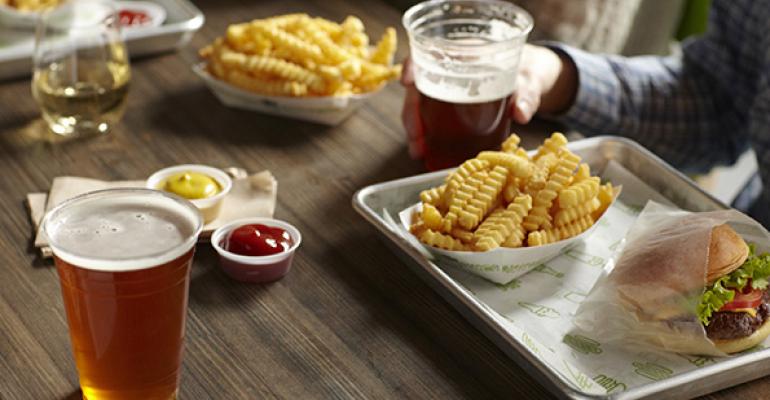Shake Shack Inc.’s initial public offering in January was a boon for the company, and not just because its stock price has more than tripled since then.
Same-store sales rose 11.7 percent in the first quarter ended March 31, the company said Wednesday. Shake Shack CEO Randy Garutti cited the “extraordinary amount of press surrounding the IPO” as one of the reasons for its strong performance in the first quarter.
Other reasons included a pair of menu price hikes in recent months, which increased the amount of money customers spent at the chain’s 68 restaurants. Traffic rose 2.1 percent.
The company also closed its flagship location, in Madison Square Park in New York City, for rebuilding. That has lifted business at other Manhattan units that are among the 13 locations the company uses to report same-store sales.
In an earnings call Wednesday, executives were quick to temper expectations for sales for the rest of the year.
“We remain cautious for the full year, in light of a number of factors that are not expected to continue,” Shake Shack CFO Jeff Uttz said.
Shake Shack’s IPO has passed, it will eventually lap its price increases and its Madison Square Park location will reopen. The company expects same-store sales to be up from the low- to mid-single-digits for the year.
Tempering expectations might be difficult for Shake Shack, given the excitement surrounding the burger chain’s January offering and its stock performance since. The company’s stock price more than doubled on its debut and kept climbing, approaching $80 a share earlier this month before falling back to earth.
Shake Shack’s stock increased another 5 percent on Thursday, to just more than $70 a share, following a strong earnings report in which revenue increased more than 50 percent and operating profits increased 78 percent. It has risen 233 percent from its offering price. The company is already one of the most closely watched restaurants on Wall Street.
Shake Shack has a market capitalization of $2.6 billion, or about $38 million per unit. By comparison, Popeyes Louisiana Kitchen Inc. — a strong company in its own right — has 2,400 mostly franchised locations and a market cap of $1.4 billion.
Stifel analyst Paul Westra wrote in a note Wednesday that Shake Shack has the restaurant industry’s “best company/concept story,” and said that it is the “poster child” for a positioning among “new-age QSR-like single-product-line concepts.” But, he said, “We continue to believe (Shake Shack) shares are fully valued.”
Still, enthusiasm for the brand is following Shake Shack into other areas. The company said during its earnings call that new locations in Chicago and Las Vegas have both been performing above expectations.
Executives said that new locations have long honeymoons, but expect that they will eventually fall into line with expected average unit volumes between $2.8 million to $3.2 million per location.
The company also recently opened new locations in New Jersey and Austin, Texas, with plans to open 10 new units in the U.S. this year. Next year, it plans to open its first location in Los Angeles, and will open the first of 10 expected units in Japan.
The openings in Austin and Los Angeles would put Shake Shack into big burger territory. Texas is home to chains like Whataburger, and Austin has indie operator Hopdoddy Burger Bar. California has several burger chains, most notably In-N-Out.
Yet Garutti said Shake Shack has been looking to California “for a very long time,” and found a location with “proximity to every great neighborhood in Los Angeles.”
“With the Vegas opening, more than ever people from Southern California were coming to the Shake Shack, understanding what it is and asking us to bring it to L.A.,” Garutti said. “That’s why we went ahead and did that.”
Contact Jonathan Maze at [email protected].
Follow him on Twitter: @jonathanmaze





